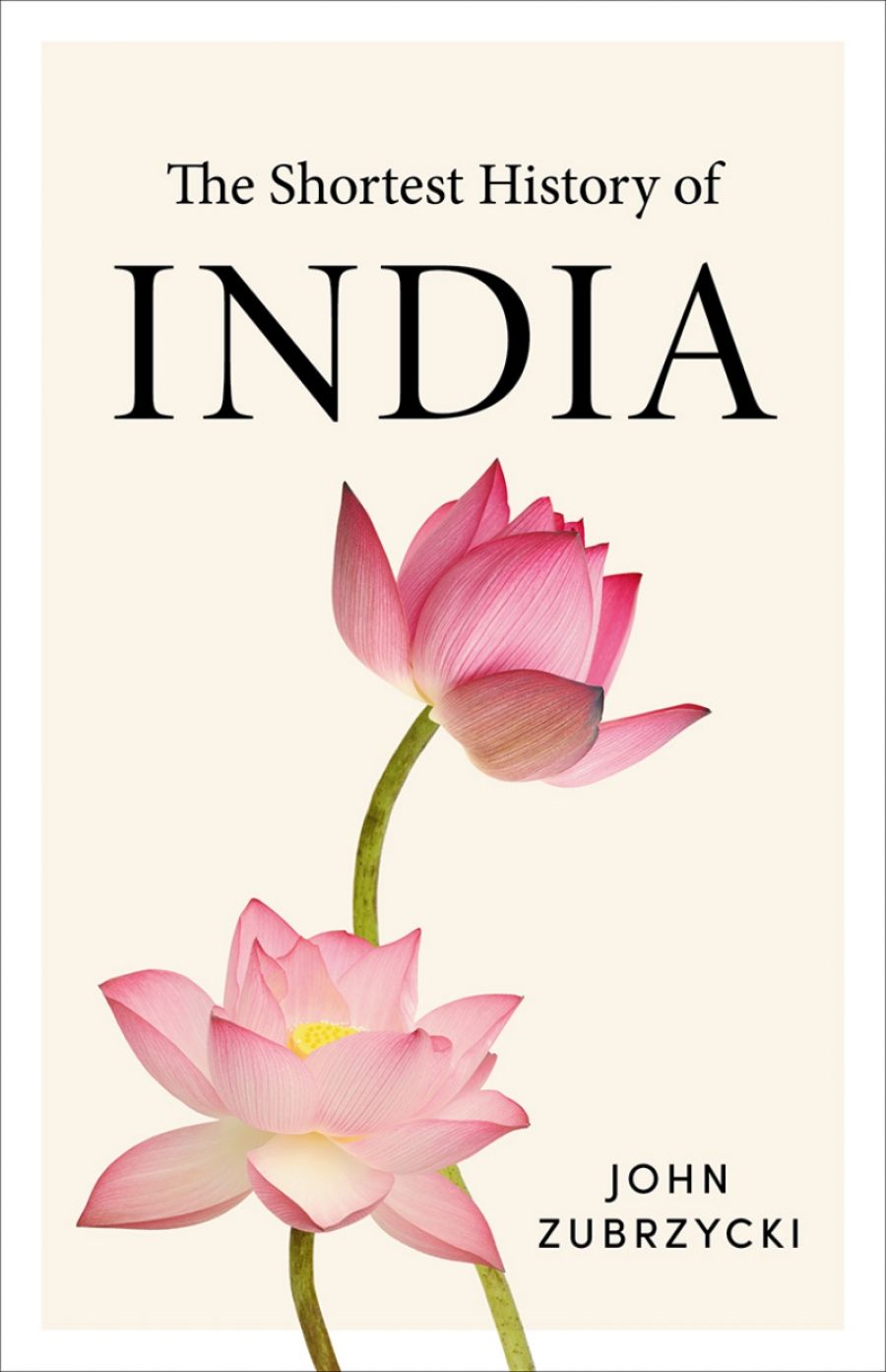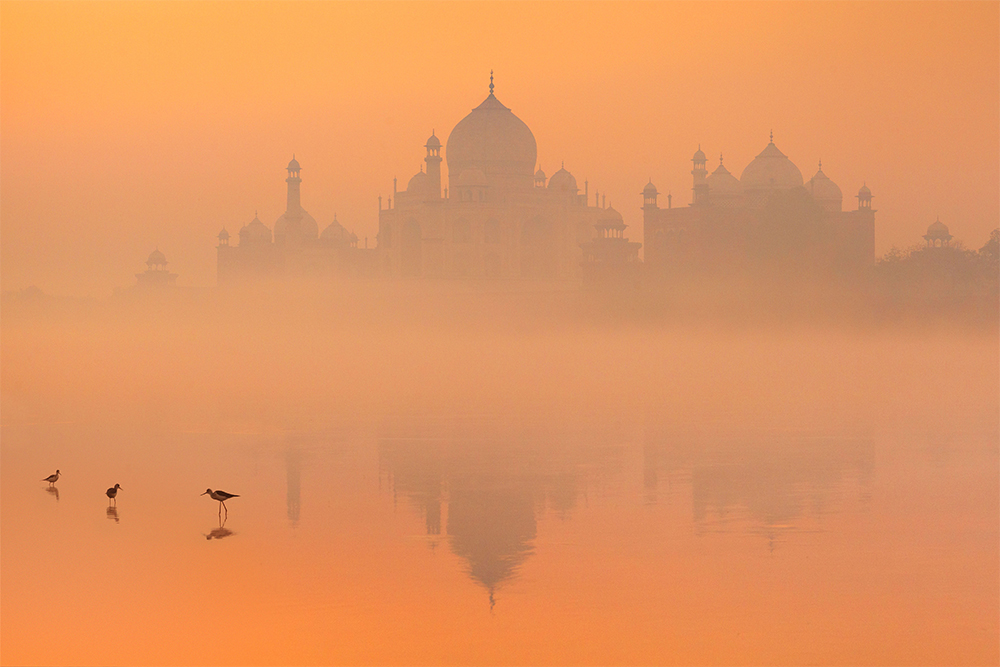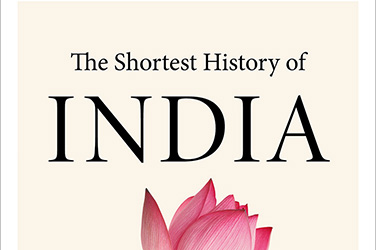
- Free Article: No
- Contents Category: History
- Review Article: Yes
- Article Title: From the <em>Vedas</em> to the BJP
- Article Subtitle: An outstanding short history of India
- Online Only: No
- Custom Highlight Text:
It takes genuine courage to attempt a synoptic history of India and considerable skill to abridge the story of more than five thousand years into a book of fewer than three hundred pages. For a start, the evidence we have for what occurred during the first forty centuries is scarce and uneven. Archaeologists have unearthed planned towns, figurines, seals, pots, and tools that attest to the existence of a sprawling and successful society flourishing in the Indus Valley from around 3300 BCE until 1300 BCE. But as John Zubrzycki explains in this clever book, we know little if anything about how this Harappan civilisation was ruled or organised, partly because its script has not been deciphered and partly because no buildings akin to palaces or temples have yet been found.
- Article Hero Image (920px wide):

- Article Hero Image Caption: Skyline of Taj Mahal, Agra, Uttar Pradesh, India (photograph by Jan Wlodarczyk/Alamy)
- Alt Tag (Article Hero Image): Skyline of Taj Mahal, Agra, Uttar Pradesh, India (photograph by Jan Wlodarczyk/Alamy)
- Featured Image (400px * 250px):

- Alt Tag (Featured Image): Ian Hall reviews 'The Shortest History of India' by John Zubrzycki
- Book 1 Title: The Shortest History of India
- Book 1 Biblio: La Trobe University Press, $26.99 pb, 288 pp
- Book 1 Readings Link: booktopia.kh4ffx.net/yR5V2N
There is evidence of a different kind for some of what occurred in South Asia after the Harappans, but it is still frustratingly incomplete. There is now broad agreement, Zubrzycki observes, that in the thirteenth century BCE nomadic peoples who called themselves Aryans swept out of Central Asia and past the Indus Valley into the subcontinent. They left few physical artefacts but produced a large corpus of poetry, the Vedas, initially passed down orally and later written, laying the foundations for what became Hinduism. These texts make it clear that the Aryans were a horse-borne, cattle-breeding, and bronze-forging people who saw themselves as culturally distinct from the pre-existing inhabitants of South Asia. They depict a complex stratified society, split into varnas, with priests and warriors ruling over farmers and traders, and servants and labourers below them. They describe religious beliefs and practices and, in the great epic Mahabharata, offer moral instruction.
Yet for all the glimpses of life that the Vedas, like the remains of Harappan towns, provide, they tell us frustratingly little about the history of the Aryans. For a sense of events, we have to wait until the sixth century BCE and the religious revolutions of the Buddha, Siddhartha Gautama, and Vardhamana, the founder of Jainism. Records of kings and kingdoms also emerge at this time, allowing historians to piece together the rise of the Mauryan Empire, which briefly united the subcontinent into a single polity in the third century BCE. Zubrzycki’s account of this ‘period of ferment’ is deft, neatly juxtaposing the Buddhist idealism and the cold Machiavellianism of Kautilya’s political treatise Arthashastra that inspired great rulers like Asoka. Despite the yawning gaps in the historical record, his treatment of the less well known so-called ‘dark’ and ‘classical’ ages, stretching from the death of Asoka in about 232 BCE until the arrival of Islam, is equally enlightening.
Understandably, given the relative distribution of evidence, the bulk of this book is concerned with the period after the establishment of the Delhi Sultanate by Turkic Mamluks in 1206. Wisely, Zubrzycki picks his way carefully through this tricky terrain, aware that the behaviour of India’s Muslim, British, and indeed postcolonial rulers was often controversial during their lifetimes and remains so today. His narrative speeds along at pace but gives due attention to the major historical debates and various colourful characters, like Raziyya al-Din, reputedly placed on the Sultan’s throne by her dying father, who considered her a worthier successor than his surviving sons. Particular attention is given to the ‘magnificent Mughals’, including the contentious Aurangzeb, who set aside the relative tolerance of his predecessors, demolishing Hindu temples and insisting his non-Muslim subjects pay the notorious jizya tax imposed on non-believers.
When Zubrzycki turns to the British, he rightly embraces the thinking of revisionists like William Dalrymple and Jon Wilson, who emphasise the rapacity of the East India Company and the folly of the Raj that succeeded it, rejecting the notion that imperial rule was ever more than intermittently and ineffectively benign. The conquest of the subcontinent by the Company is narrated swiftly and with aplomb. The misrule that led to the revolt of 1857 is detailed unsparingly, along with the vicious revenge meted out by the British against those who rebelled. As Zubrzycki observes, the constitutional changes, railways, and canals the British introduced after the revolt did little to improve the lot of Indians in the decades that followed, still less narrow the gap between them and the homesick and commonly racist Britons sent out to defend and administer the country. For all these reasons, his retelling of the story of India’s independence movement, beginning with the founding of the Indian National Congress by the birdwatcher and colonial administrator Allan Octavian Hume, has a distinct air of inevitability. It is told well nonetheless, with the enigmatic and peculiar Mohandas Karamchand Gandhi at the core.
The book concludes with a brisk but balanced summary of India’s history since independence, followed by some reflections on the present government’s attempt to conjure a ‘New India’ into being. Zubrzycki captures the genius and shortcomings of Jawaharlal Nehru, as well as the flaws of his successors, his daughter, Indira Gandhi, and her son Rajiv, who undermined the delicate political settlement Nehru put in place. He expresses sincere concern about the erosion of India’s unusual version of secularism and the efforts being made by the now-dominant Bharatiya Janata Party (Indian People’s Party or BJP) to turn the country into an overtly Hindu nation.
Like some other arguments, this one will irritate some readers, including supporters of Narendra Modi and the BJP. It should not. This Shortest History is crafted in accessible prose, but what it lacks in footnotes it more than makes up for in thoughtfulness. When offered, judgements are carefully measured. Tentative assertions are qualified, and interpretations of patchy evidence have appropriate caveats. Throughout, John Zubrzycki’s scholarship is apparent in brief asides that point readers beyond the text to academic disputes about what we think we know about India’s past and why. The result of all this care is the best short history of India yet produced.


Comments powered by CComment